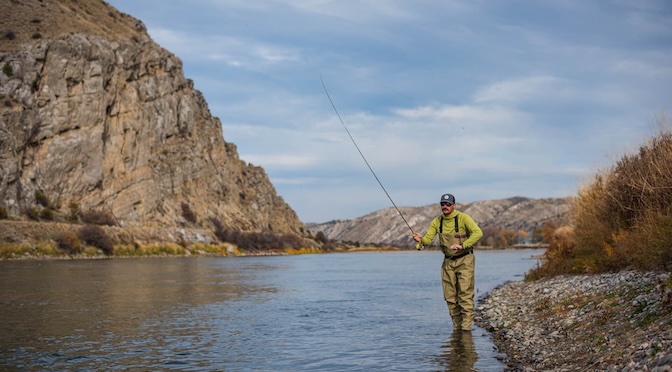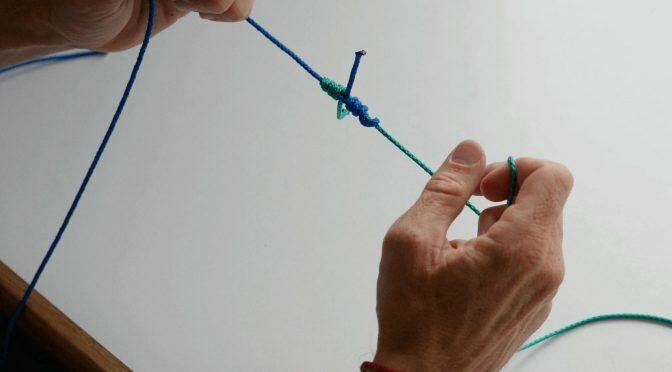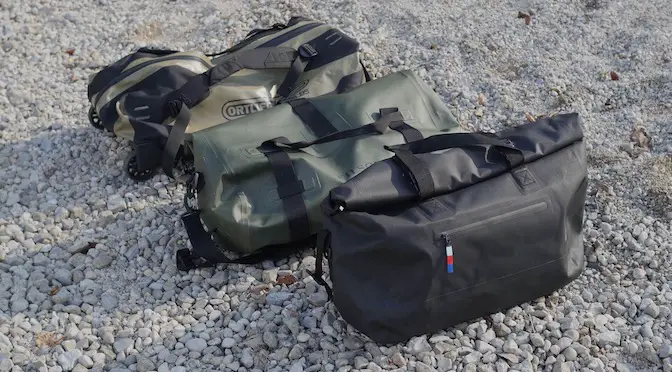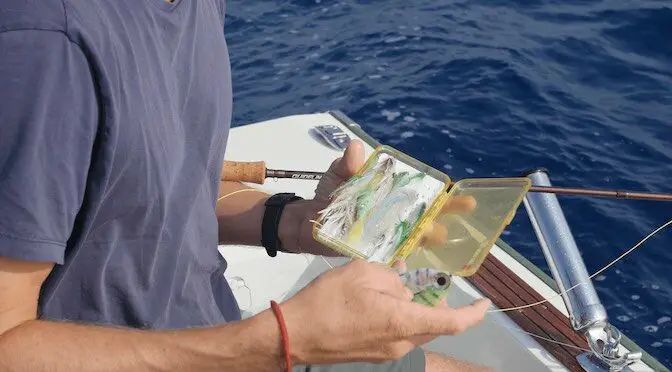Last updated on November 10th, 2025.
- Can YETI’s new backpack deliver? Thoughts on the YETI CAYO - November 20, 2025
- How to Put a Worm on a Hook: Proven Methods for a Perfect Bait - November 18, 2025
- How to Fish in a River: An Essential Guide to Proven Techniques - November 18, 2025
The Line Choice: Key Differences at a Glance
The choice between monofilament and fluorocarbon hinges on a trade-off between visibility, cost, and specific lure performance. Monofilament is a floating, forgiving, and affordable line ideal for topwater lures, while fluorocarbon is a sinking, nearly invisible, and sensitive line perfect for baits fished near the bottom. The decision isn’t about which line is “better,” but which is the right tool for a specific situation, primarily balancing fluorocarbon’s stealth against monofilament’s superior manageability and lower cost.
As a simple rule of thumb, remember this: Monofilament floats, making it the non-negotiable choice for topwater lures. Fluorocarbon sinks, making it the go-to for baits you need to get down on or near the bottom. The other major difference is stretch. Monofilament’s stretch acts like a shock absorber, which is a huge advantage for baits with treble hooks. In contrast, fluorocarbon’s low-stretch composition provides incredible sensitivity for feeling subtle bites and the power needed for setting large, single hooks. Ultimately, fishing line is just one part of a balanced system, and to get the most out of your choice, you need to understand how to choose a fishing rod that complements its properties.
What Are Monofilament and Fluorocarbon Lines?
Monofilament is a single strand of nylon that has been the standard, entry-level fishing line for decades, while fluorocarbon is a denser, harder single strand made from polyvinylidene fluoride (PVDF). Monofilament, often called “mono,” is created by extruding melted nylon pellets into a single, continuous filament. Its long history and simple manufacturing process make it a widely available and affordable option for anglers of all levels.
Fluorocarbon, or “fluoro,” is made from a material called polyvinylidene fluoride. Its molecules are more tightly packed than nylon’s, which makes the resulting line significantly denser and harder. While both monofilament and fluorocarbon are technically single-strand lines, their fundamentally different chemical compositions result in vastly different performance attributes on the water, from visibility and sink rate to stretch and abrasion resistance.
Why Your Line Choice Is Critical: The Stakes for Anglers
Choosing the right fishing line directly impacts your lure’s presentation, your ability to get a solid hookset, and your overall frustration level on the water. The correct line results in more bites and fewer lost fish. A smart line choice leads to a more natural lure presentation, which is critical for tricking wary fish. For example, fluorocarbon’s near-invisibility can be the deciding factor in clear water, while monofilament’s suppleness can give certain soft baits a more lifelike action.
Your line is also the critical link for converting a bite into a landed fish. Using a line with too much stretch, like monofilament, for a long-distance hookset on a jig can result in a missed opportunity because the line absorbs the energy instead of driving the hook home. Finally, making a smart choice saves you money and time. Using a line with poor abrasion resistance around rocks will lead to lost lures, while trying to manage a stiff, uncooperative line can lead to frustrating tangles.
The Core Mechanics: 4 Key Physical Differences
The four key differences between monofilament and fluorocarbon are stretch, visibility, density, and durability, which dictate how each line performs in the water.
Stretch & Sensitivity
Monofilament has significant stretch, which acts as a valuable shock absorber. This is highly beneficial when fighting fish on lures with small treble hooks, as it prevents the hooks from tearing out during sudden runs. The major downside of this stretch is reduced sensitivity; it can be difficult to feel subtle bites or the composition of the bottom. Fluorocarbon has very low stretch, making it incredibly sensitive. This lack of give telegraphs everything your lure touches directly to your hands, from light bites to changes between rock and sand. This property also provides superior power for driving home large, single hooks, even at the end of a long cast.
Visibility
Monofilament tends to refract light, making it more visible to fish underwater. For this reason, it is a poor choice when fishing in very clear water or targeting species known to be line-shy. Some anglers use pink monofilament based on the theory that red is the first color in the light spectrum to disappear in the water column, making it less visible at depth. Fluorocarbon’s primary advantage is its near-invisibility. It has a refractive index very close to that of water, which allows light to pass through it rather than reflecting off it. This makes it the superior choice for finesse techniques and fooling heavily pressured fish.
Density (Sink vs. Float)
Monofilament is less dense than water, giving it near-neutral buoyancy. This causes it to float or sink very slowly, which is a critical advantage for keeping topwater lures on the surface where they belong. This same property becomes a disadvantage when you need to get a bait down to the bottom quickly. Fluorocarbon is much denser than water and sinks reliably. This helps lures like jigs and deep-diving crankbaits get into the strike zone faster and stay there. While this is a major benefit for most subsurface presentations, it makes fluorocarbon unsuitable for fishing topwater lures.
Durability & Handling
Monofilament is soft, supple, and very easy to handle. It is forgiving to cast and holds knots exceptionally well, boasting excellent knot strength. Its weaknesses are that it absorbs water over the course of a fishing day, which can weaken it, and it is susceptible to long-term damage from UV light. Fluorocarbon is a harder, stiffer material, which gives it superior abrasion resistance for fishing around sharp rocks, wood, and docks. However, it is more prone to line memory (coiling), is more difficult to tie knots with, and has lower knot strength than mono. You’ll want a pair of the best fishing pliers to help manage leaders and cut this tougher material cleanly.
The L.I.N.E. Decision System: How to Choose in 4 Steps
The L.I.N.E. Decision System provides a simple, four-step process to choose the right line by evaluating your target Location, lure hooks, water Notes, and your Experience level.
Step 1: (L)ocate Your Target Zone
First, decide where in the water column your lure needs to be. If you are fishing a topwater lure like a popper or walking bait, choose Monofilament. Its floating property is essential to keep your lure on the surface and performing as designed. If your target zone is on the bottom or in deep water, choose Fluorocarbon. Its sinking property will get your bait down quickly and help you maintain direct contact with it.
Step 2: (I)dentify Your Lure’s Hooks
Next, look at the hooks on your bait. If you are using a lure with treble hooks, such as a crankbait or topwater plug, lean towards Monofilament. Its inherent stretch provides a crucial shock-absorbing quality that prevents the small hooks from tearing out during a fight. If your bait has a single, large hook, like a football jig or a Texas-rigged worm, choose Fluorocarbon. Its low stretch transmits maximum energy on the hookset to drive that big hook point home.
Step 3: (N)ote Water Clarity & Cover
Assess the environment you’re fishing in. If the water is gin-clear or you know the fish are heavily pressured, choose Fluorocarbon. Its near-invisibility is a massive advantage that will lead to more bites. Likewise, if you are fishing around abrasive cover like rocks, docks, or wood, choose Fluorocarbon for its superior abrasion resistance. If the water is stained and the area is relatively free of snags, Monofilament is a perfectly acceptable and highly cost-effective choice.
Step 4: (E)valuate Your Budget & Skill
Finally, be realistic about your budget and experience level. If you are a beginner or on a tight budget, start with Monofilament. It is significantly more affordable, and its forgiving, easy-to-manage nature is perfect for learning to cast and tie knots without frustration. If you are an experienced angler seeking maximum performance for specific techniques, invest in Fluorocarbon. The added cost is justified by the tangible increase in sensitivity and stealth.
Your Action Plan: Specific Scenarios & Applications
For specific applications, use monofilament for topwater lures and reel backing, and use fluorocarbon for bottom contact baits and deep-diving crankbaits.
For Topwater Lures
Use Monofilament. This is the most clear-cut application in fishing. The buoyancy of monofilament is non-negotiable for keeping baits like poppers, walking baits, and buzzbaits on the surface. Using sinking fluorocarbon here will pull the nose of the lure down, killing its action and rendering it ineffective.
For Bottom Contact (Jigs, Texas Rigs)
Use Fluorocarbon. Its high sensitivity is perfect for feeling the bottom composition and detecting the most subtle bites from fish. Its low stretch ensures you have the power to drive a big hook home on the hookset, and its excellent abrasion resistance protects your line from being cut by rocks, wood, or other cover.
For Crankbaits
The choice depends on the crankbait’s diving depth. For deep-diving models, use Fluorocarbon. Its thinner diameter and sinking nature help the bait dive deeper and faster, maximizing its time in the strike zone. For example, using 12-pound fluorocarbon can add multiple feet to a crankbait’s depth range compared to 12-pound monofilament. For shallow-running crankbaits and wake baits, use Monofilament. Its larger diameter and buoyancy will help keep the bait from diving too deep and maintain its intended action.
As a Leader or Tippet
Both lines have a critical role as leader material. A leader is a vital component, and it’s important to understand the difference between a leader vs tippet in specialized areas like fly fishing. Fluorocarbon leaders are ideal for stealth in clear water and for abrasion resistance when targeting fish with rough mouths (like tarpon) or fishing in heavy cover. A 4lb-12lb fluoro tippet is a great choice for wary trout. Monofilament leaders are excellent for big game fishing where knot strength on large-diameter lines is paramount. It is also used as a “class tippet” to add shock absorption and serve as a legal breakpoint for IGFA records.
For Reel Backing
Use Monofilament. It is far more affordable than fluorocarbon or braided line. Spooling your reel with 50-75 yards of monofilament before adding your more expensive main line is a smart and common practice to cut costs significantly without sacrificing performance.
Common Mistakes to Avoid When Spooling Up
Anglers new to these lines often make mistakes by using the wrong line for their technique, tying poor knots in fluorocarbon, or ignoring line memory.
MISTAKE 1: Using the Wrong Line for the Technique
The most common error is ignoring the fundamental physics of the line. Do not use sinking fluorocarbon for a floating topwater lure, as it will ruin the bait’s action. Conversely, don’t use stretchy, buoyant monofilament when you need to feel a subtle bite on the bottom with a Texas rig 40 yards away. Match the line’s properties to the lure’s purpose.
MISTAKE 2: Tying Poor Knots in Fluorocarbon
Fluorocarbon is harder and slicker than monofilament, meaning bad knots are more likely to fail. Always moisten your line with saliva or water before slowly and steadily cinching down a knot. This reduces friction that can weaken the line. A poorly tied knot is the weakest link in your entire setup.
MISTAKE 3: Ignoring Line Memory
Fluorocarbon, especially in heavier pound tests, is more prone to “memory,” which causes it to retain the coiled shape of the reel’s spool. This can lead to casting issues and frustrating tangles. If you notice your line is coiling excessively, pull a few yards off the reel and stretch it firmly between your hands to help straighten it out.
MISTAKE 4: Overlooking Your Reel’s Role
Stiff, heavy-pound-test fluorocarbon can be very difficult to manage, especially on a spinning reel with a small-arbor spool. When deciding between a spinning vs casting reel, remember that baitcasting reels generally handle heavier, stiffer fluorocarbon much better than spinning reels do, reducing loops and tangles.
Transformation: From Confused Novice to Confident Angler
By understanding these key differences, you can now confidently select the right fishing line as a specific tool for the job, leading to less frustration and more fish. You now understand that fishing line is not a one-size-fits-all purchase. You can look at a wall of options and see a toolbox of specific solutions rather than a confusing mess.
You are equipped with a simple system (The L.I.N.E. Decision System) to analyze your situation—lure, depth, water clarity—and choose the optimal line every time you hit the water. As a result, you will spend less time dealing with frustrations like missed hooksets, broken lines, and unnatural lure presentations, and more time confidently presenting your bait and enjoying the thrill of catching more fish.
Frequently Asked Questions
What is the simplest way to choose between monofilament and fluorocarbon?
Remember that monofilament floats and fluorocarbon sinks. Use monofilament for any topwater lure to keep it on the surface, and use fluorocarbon for baits like jigs or Texas rigs that you need to get to the bottom.
Why is monofilament better for lures with treble hooks?
Monofilament has significant stretch that acts as a shock absorber during a fight. This forgiving quality is crucial for preventing small, sharp treble hooks from tearing out of a fish’s mouth during sudden runs or head shakes.
When is fluorocarbon the best choice?
Fluorocarbon is the best choice when fishing in clear water, targeting line-shy fish, or using baits that need to be on or near the bottom. Its near-invisibility, sensitivity, and sinking properties make it ideal for jigs, Texas rigs, and deep-diving crankbaits.
Can fish see fluorocarbon and monofilament lines?
Fluorocarbon is nearly invisible underwater because its refractive index is very close to that of water, allowing light to pass through it. Monofilament is more visible as it reflects light, but using a clear or pink line can reduce its visibility in certain conditions.
Does using fluorocarbon line really make a difference?
Yes, it makes a significant difference in specific situations. Its near-invisibility can lead to more bites in clear water, its density helps lures dive deeper, and its superior abrasion resistance and sensitivity are critical for fishing around cover and detecting subtle bites.
Why use monofilament as backing on my reel?
Using monofilament for backing is a cost-effective way to fill a reel’s spool before adding a more expensive main line like braid or fluorocarbon. It also provides a base that prevents thinner braided lines from digging into the spool arbor under pressure.
Does fluorocarbon absorb water and weaken like monofilament?
No, fluorocarbon does not absorb water, so its properties remain consistent throughout a day of fishing. Monofilament is permeable and will absorb water over time, which can slightly weaken the line and alter its handling characteristics.
Is pink monofilament actually less visible to fish?
The theory behind pink monofilament is that red is the first color in the light spectrum to disappear as water depth increases. This can make the line appear gray or clear at depth, potentially making it less visible to fish compared to other colors in deeper water.






